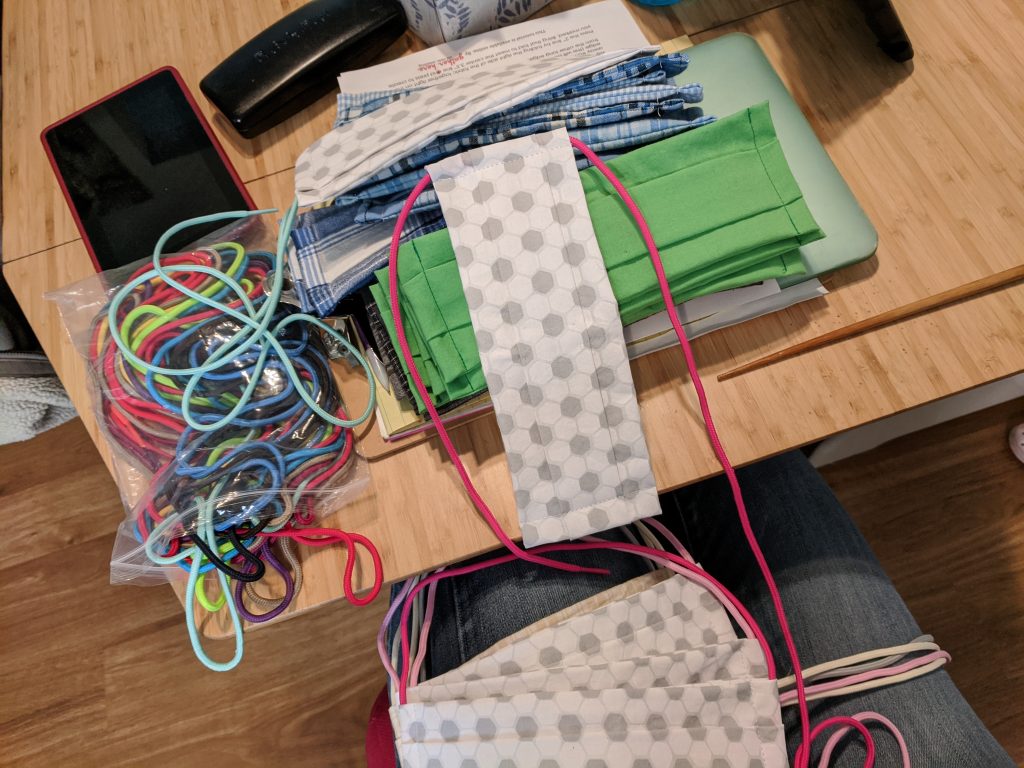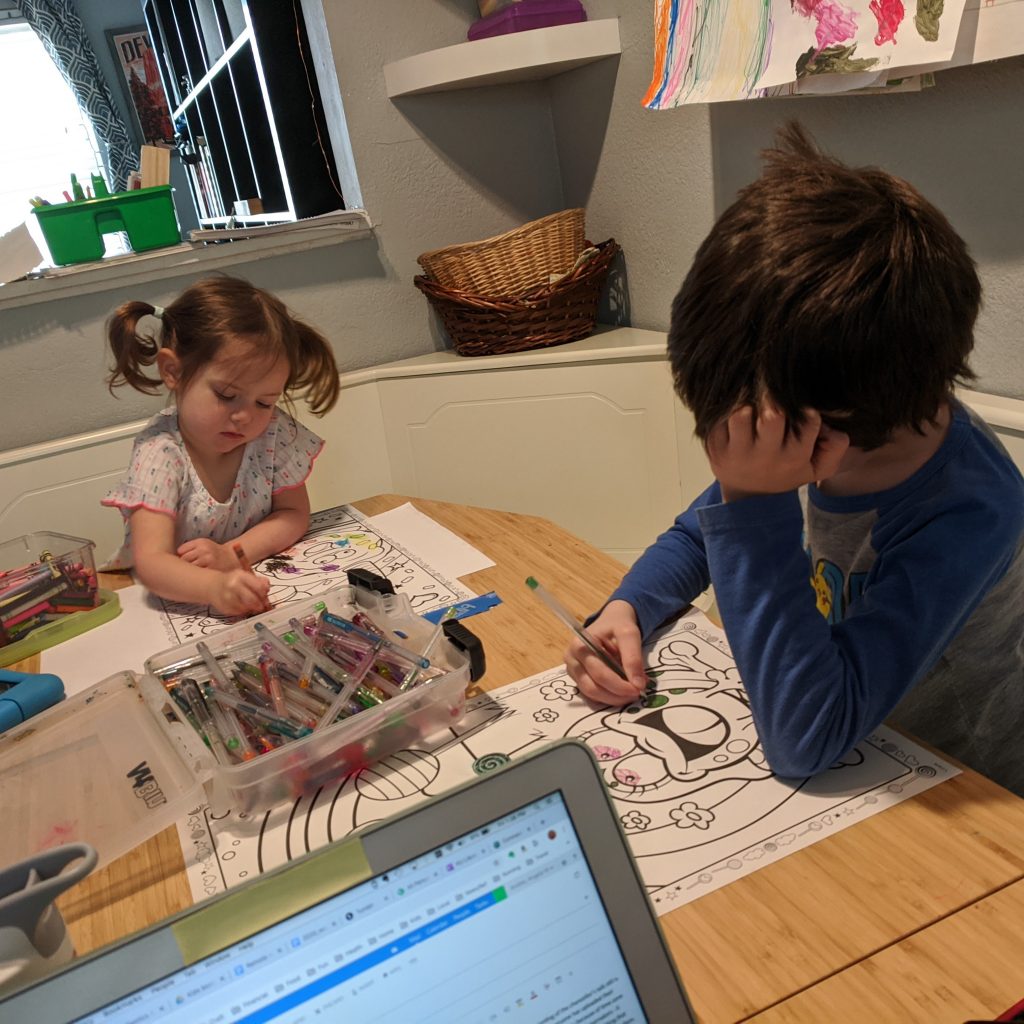What Remote Work Looks Like for a Conservator
April 30th, 2020Working at home has become the new normal for many of us since around mid-March, when a national state of emergency was declared because of the novel coronavirus (COVID19) and many states, counties, and municipalities began to issue stay-at-home orders. Essential workers have been doing an amazing job keeping services functioning and supplies in stock, and of course health care workers are fighting the virus at great personal risk every day.
For those of us deemed non-essential, staying home and following public health advice is the number one thing we can do to support our essential workers, and to combat the spread of COVID19. After that, the next best thing we can do is take care of ourselves, our loved ones, and our neighbors while maintaining good hygiene and safe distance. After THAT, we can help by continuing to do our jobs to the best of our ability in these challenging circumstances. For some people, work at home might not look a whole lot different from how it looks in their workplace. Others, including many of us conservators, are finding our days looking radically different from a typical day in the lab.
In pre-COVID19 times, a regular day for a conservator probably consisted mostly of doing treatment and other hands-on work at the bench, with a smaller amount of time spent on an assortment of other activities such as email, research and reading, writing, outreach, meetings and committee work, collection surveys, and so many more “other duties as required.” In our new work-at-home reality, the “other duties” now make up the bulk of our work days. Some conservators may have the space and equipment to do treatments at home; I have seen examples of this on social media, although in these cases the treatments are limited to general collections materials. Conservators who work on rare books, special collections, and archival materials (or on museum collections of almost any kind) do not have the option to bring those materials home. There are other hands-on activities that conservators can do that do not require access to collections, such as practicing sewing end bands or making bookbinding models. Many conservators have put their hand skills to work sewing masks for donation to health care workers and community organizations.
Prior to the emergency declaration, when it was becoming clear that widespread closures were likely, the conservation community began to collect ideas for activities that conservators could do while working from home. Conservators from around the world contributed ideas – everything from webinars and professional development opportunities to free online learning resources and links to articles and video tutorials. I have referred to this list often as I put together my daily work-at-home tasks.
So, what does working at home look like for me? I will say that the one thing that working at home has in common with working in the lab it that every day is different! About five weeks in, I have fallen into something of a rough routine, but because I have a three-year-old, a first grader who is doing remote learning, and a spouse who is also working from home, it’s necessary to keep my schedule flexible to adjust to the needs of my “coworkers.”
On the first day of remote work, I took that list that my conservation colleagues had compiled and spent some time sorting it into categories – webinars, online courses, lectures, articles, wellness, and so on. I deleted things that I’d already done or were not applicable, and highlighted those that were of greater interest. I also added a few projects that were already underway and could be continued (at least partially) from home, and brainstormed some new ideas for projects that I could start.
Working from this list, I set about making a to-do list for each day that includes basics like checking email and posting to social media, and a few items from the master list of activities. It’s a good day if I can get everything checked off that day’s list, and most days I do. I’m an early riser, and now that I don’t have a commute, I’m able to start my day earlier to get ahead of things. Once the kids are up and fed, my first grader and I sit at the table and work side by side; he’s mostly gotten the hang of the online learning technology so I just help keep him on task and guide him when he’s stumped. When he’s done for the day, I usually have about an hour more of work time until lunch, and family lunches are definitely a highlight of working from home, especially now that the weather is pleasant enough that we can eat outside on the patio. In the afternoon, I’ll continue to work on my list of activities while navigating sibling politics and keeping them supplied with snacks and activities of their own. The mute function on Zoom is certainly my good friend these days!
That’s how I’ve been working – but what have I been working on? By my count as of Friday, April 17, I’ve watched 9 webinars and 4 archived videos of past presentations or conferences, attended 10 Zoom meetings, read 15 book chapters and 3 articles, posted to social media 39 times*, taken 3 online courses, sewn 26 masks to donate, and followed along on 2 e-forums. I have also been working on 4 projects in various stages of development, including writing up instructions for an oversized book enclosure and a custom cradle for digitization of manuscripts; a research project about training students who work in special collections; and a possible book arts video series. Later this week I will be going in to Spencer when my colleague will be there doing a regular building check; it will be good to see the lab, and I plan to collect some tools, materials, and books to help with some projects I am dreaming up, including models of some binding structures I haven’t tried before.

Somewhere in each day, whether it’s after lunch, early in the morning, or at the end of the work day, I’ve been making time to walk, run, take a bike ride, or do yoga; these activities help me enormously when it comes to managing the stress and uncertainty of this time. I’ve been grateful for the wealth of self-care resources that colleagues have shared, and for all the personal accounts of how people are dealing with this situation; knowing that I am not alone when I’m feeling a little at sea is so helpful. While I miss my colleagues and at the lab very much, I am heartened by the collective effort we are making along with the rest of the world – to have even a small part in a truly global effort is really quite inspiring. Wherever you are reading this from, I hope you are staying safe, taking care, and keeping your sights set on what’s good in the world.
*There is a robust and lively social media community of libraries, archives, museums, conservation professionals, and other cultural heritage institutions and workers. Find me on Instagram and Tumblr as @midwestconservator. Spencer’s Ann Hyde Postdoctoral Researcher, N. Kivilcim Yavuz, is also on Instagram as @manuscriptsetc, posting about Spencer’s manuscript collections every day while we are closed. Be well, y’all!
Angela Andres
Special Collections Conservator
Conservation Services


